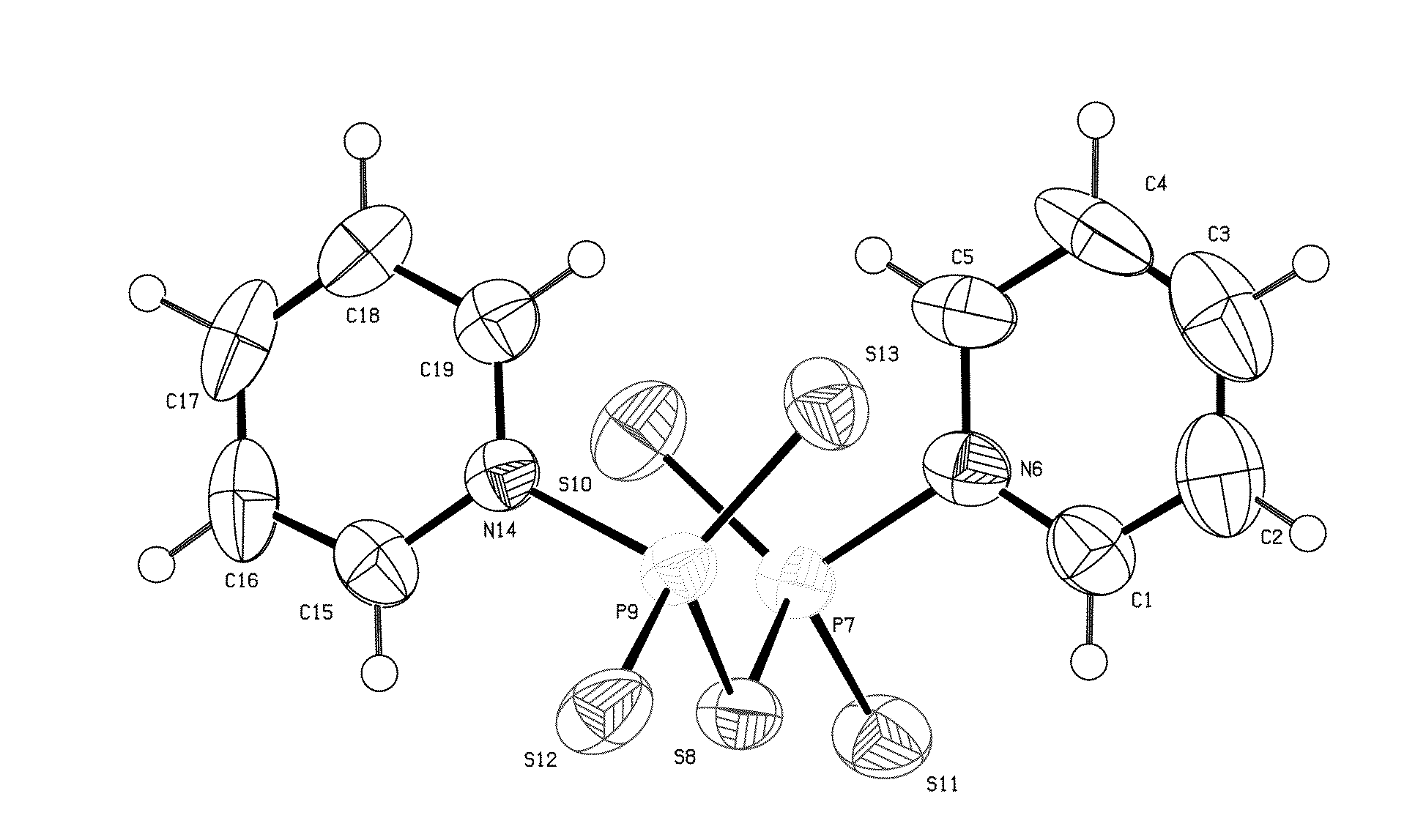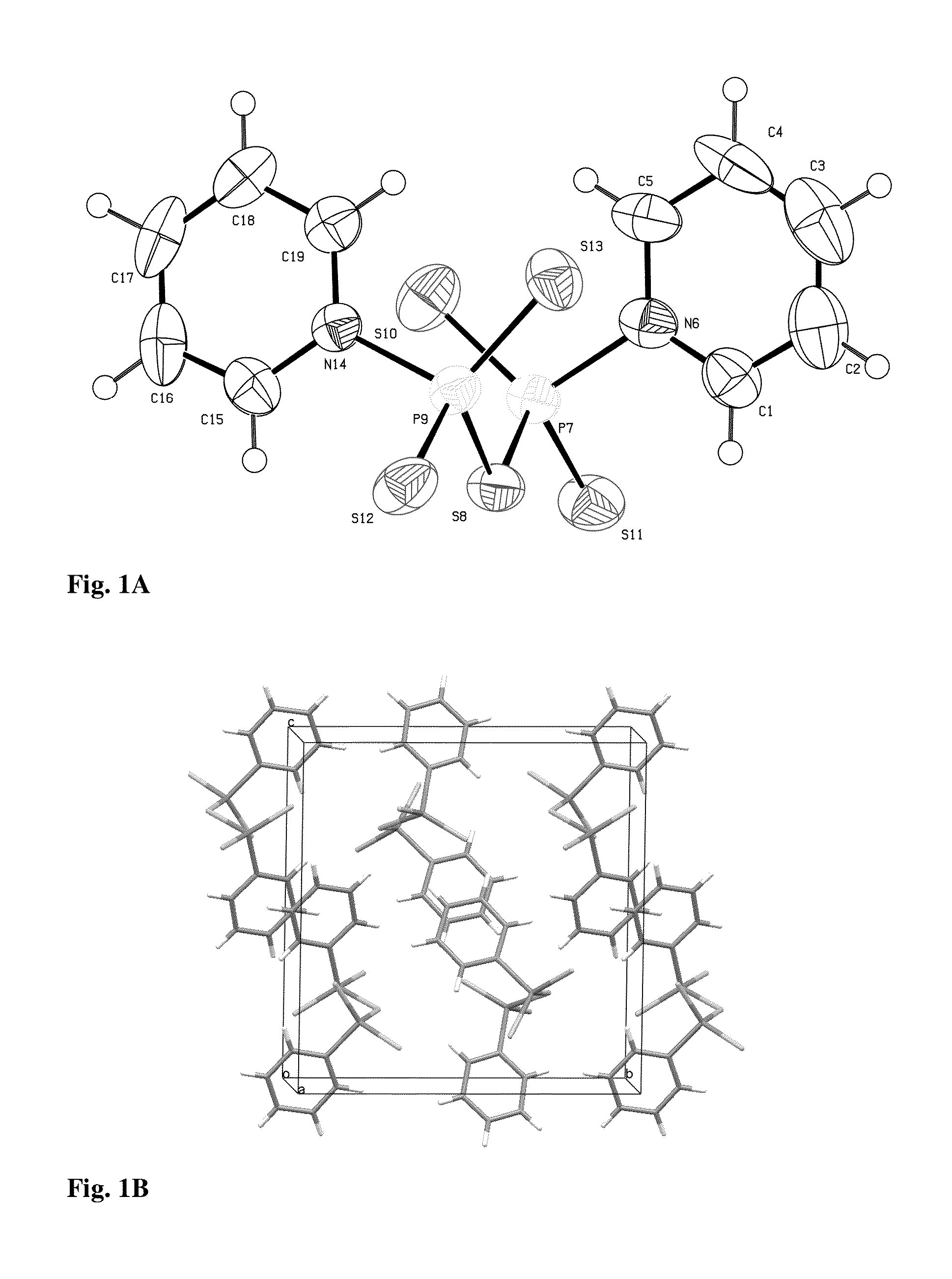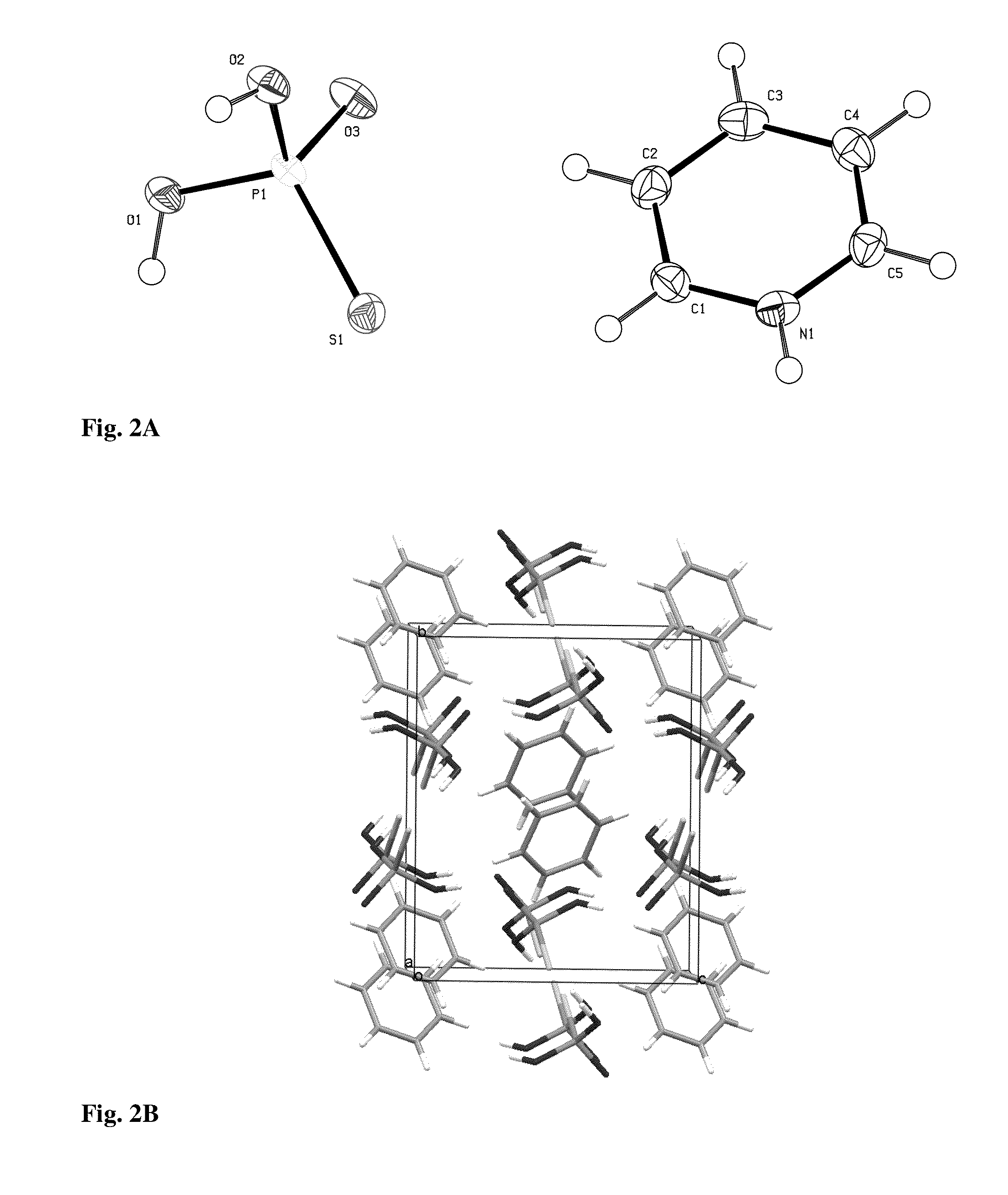Thionation process and a thionating agent
a thionation process and thionating agent technology, applied in the field of thionation process, can solve the problems of foul smelling side-products, difficult separation, and suffers of lr as a thionating agent, and achieve the effect of easy separation
- Summary
- Abstract
- Description
- Claims
- Application Information
AI Technical Summary
Benefits of technology
Problems solved by technology
Method used
Image
Examples
example 1
Crystalline P2S5.2 C5H5N
[0038]Tetraphosphorus decasulfide (P4S10, 44.5 g, 0.1 mol) was added in portions to dry pyridine (560 mL) at 80° C. using stirring equipment. After a period of reflux (1 h) a clear yellow solution was obtained, which deposited light-yellow crystals when the solution was allowed to cool. After 2 h the crystals were collected, washed with dry acetonitrile and finally transferred to an exsiccator (containing a beaker with conc. sulfuric acid) to remove any excess of pyridine, yield 62.3 g (84%), mp: 167-169° C., IR νmax: 3088, 3040, 1608, 1451, 1197, 1044, 723, 668 cm−1; cf. FIG. 1.
Pyridinium Dihydrogenmonothiophosphate
[0039]The crystalline P2S5.2 C5H5N (3.80 g, 10 mmol) was heated at reflux temperature in acetonitrile (35 mL) containing water (1.0 mL). The clear solution (obtained within 3 min) was concentrated and the product allowed to crystallize, 3.15 g, (79%). The crystals were suitable for X-ray crystallography, mp: 110-120° C., decomp., with evolution of...
example 2
(S)-11-Thioxo-2,3,11,11a-tetrahydro-1H-benzo[e]pyrrolo[1,2-a][1,4]diazepine-5-(10H)-one (Table 1, entry 17)
[0043]To a MeCN-solution (200 mL) of 2,3-dihydro-1H-benzo[e]pyrrolo[1,2-a][1,4]diazepine-5,11(10H,11aH)-dione (4.0 g, 20 mmol) crystalline P2S5.2 C5H5N (2.3 g, 6 mmol), was added and heated to 60° C. for 3 h during which time a yellow precipitate was formed. The reaction mixture was allowed to stand at room temperature overnight in order to precipitate fully. The product was vacuum-filtered and washed with a little cold MeCN to give the title compound (3.9 g, 85%) as a pale-yellow solid, mp 268-270° C.; [α]D23+971° (c 0.16, MeOH); Ir νmax: 3170, 2979, 1616, 1602, 1477, 1374, 1271, 1141, 831, 813, 752 cm−1;
[0044]1H NMR (300 MHz, DMSO-d6) δ 1.89-1.94 (m, 1H), 1.99-2.16 (m, 2H), 2.84-2.94 (m, 1H), 3.40-3.50 (m, 1H), 3.53-3.60 (m, 1H), 4.27 (d, J=6.11 Hz, 1H), 7.22-7.27 (m, 1H), 7.30-7.37 (m, 1H), 7.55-7.60 (m, 1H), 7.80-7.85 (m, 1H), 12.46 (br s, 1H); 13C NMR (75.5 MHz, DMSO-d6) δ...
example 3
2,5-piperazinedithione from glycine (Table 2, entry 1)
[0045]Glycine (1.50 g, 20 mmol), crystalline P2S5.2 C5H5N (9.12 g, 28 mmol) and dimethylsulfone (8.0 g) were heated at 165-170° C. for 1 h whereupon the reaction mixture (after cooling) was treated with boiling water for 30 min. The brownish solid obtained was recrystallized from ethanol / DMF, 1.85 g (63%) mp 284° C.; 1H NMR (300 MHz, DMSO-d6) δ 4.19 (s), 10.7 (s); 13C NMR (75.5 MHz, DMSO-d6) δ 54.4 (q), 191.9 (s).
PUM
| Property | Measurement | Unit |
|---|---|---|
| Temperature | aaaaa | aaaaa |
| Temperature | aaaaa | aaaaa |
| Temperature | aaaaa | aaaaa |
Abstract
Description
Claims
Application Information
 Login to View More
Login to View More - R&D
- Intellectual Property
- Life Sciences
- Materials
- Tech Scout
- Unparalleled Data Quality
- Higher Quality Content
- 60% Fewer Hallucinations
Browse by: Latest US Patents, China's latest patents, Technical Efficacy Thesaurus, Application Domain, Technology Topic, Popular Technical Reports.
© 2025 PatSnap. All rights reserved.Legal|Privacy policy|Modern Slavery Act Transparency Statement|Sitemap|About US| Contact US: help@patsnap.com



